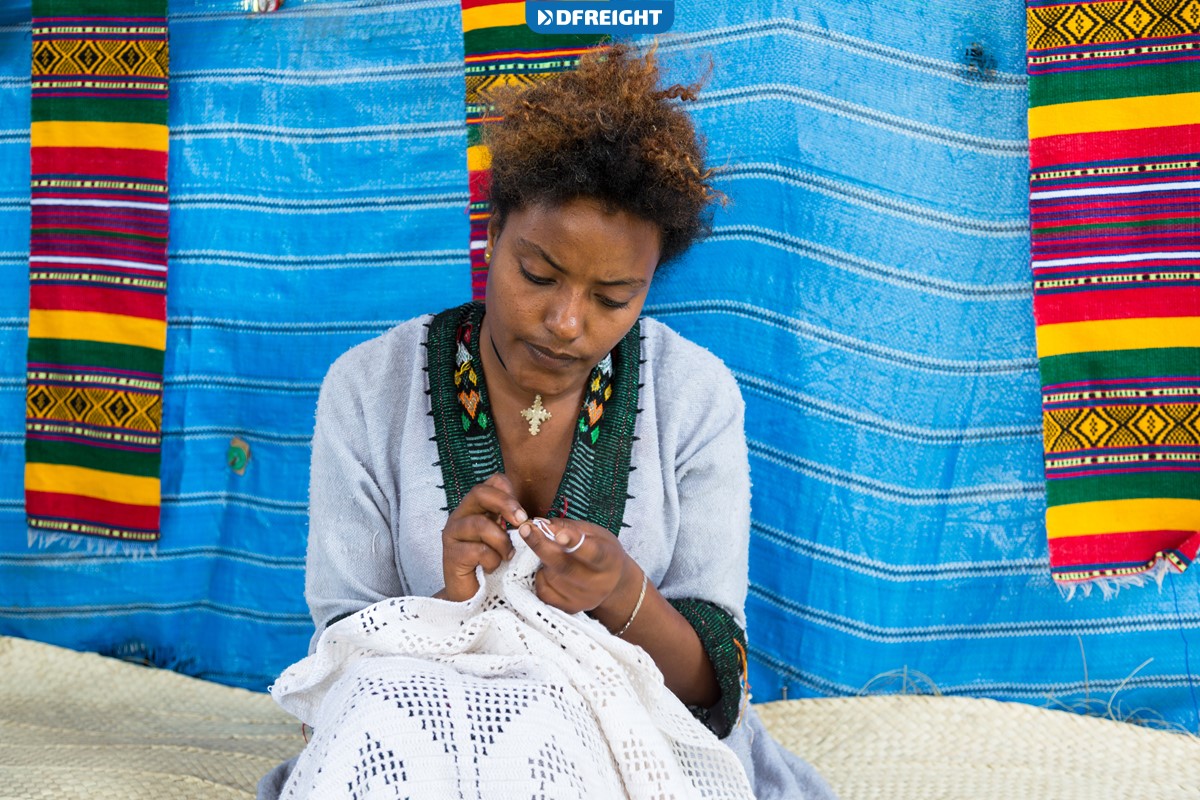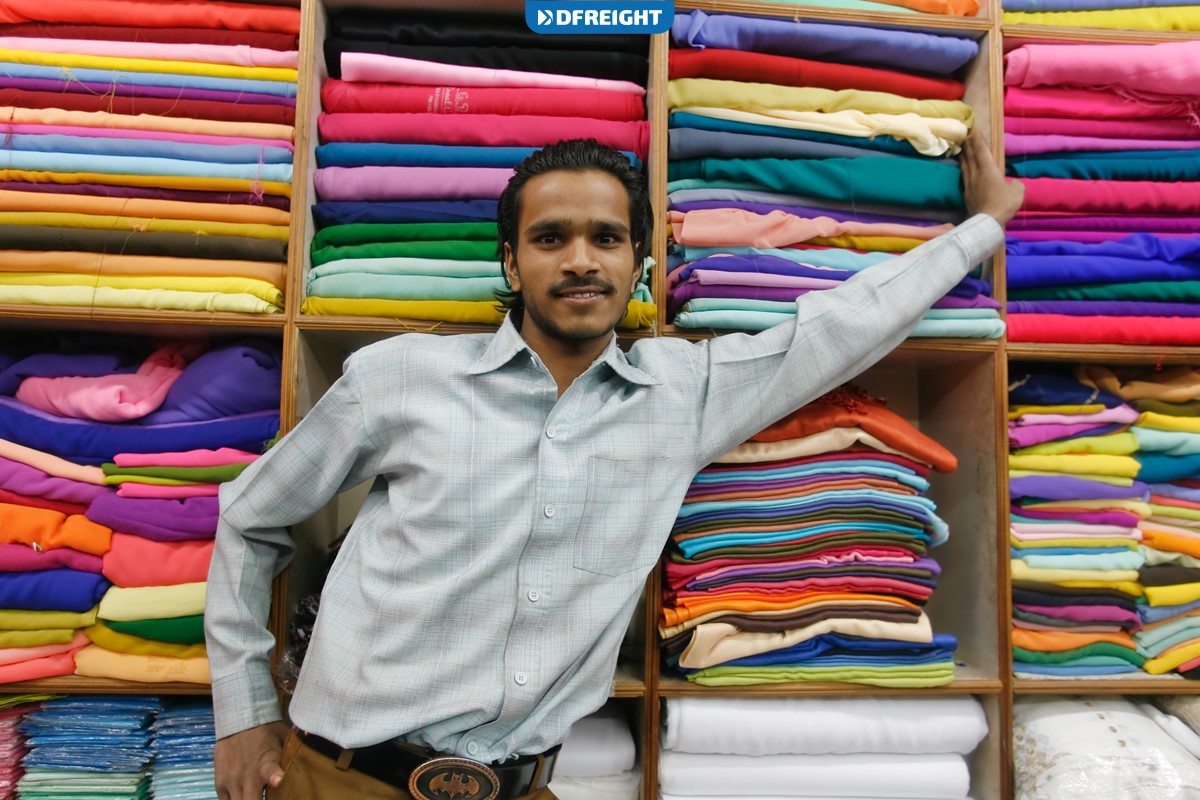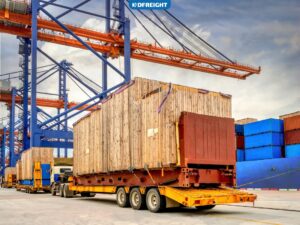Are you looking to export textiles from India to the UAE? You’ve undoubtedly come to the right place. The United Arab Emirates (UAE) is one of the countries that have seen a substantial increase in its demand for textiles from India. This blog post will explore the process of exporting textiles from India to the UAE, the regulations and requirements of the process, and the potential benefits of doing so. It will also give you tips on maximizing your logistics profits when exporting textiles from India to the UAE. If you’re going to tap into this tempting market, call us today and get a free quote!
Table of Contents
Overview of India’s Textile Industry
India has long been known for its rich and vibrant textile industry, with its vast array of colors, fabrics, and designs. This industry has grown significantly in the past few decades, and its products are now in high demand across the world.
India has a long and rich history in the textile industry, with evidence of weaving and dyeing practices dating back to at least the 5th century BC. Since then, the industry has grown into a major part of the country’s economy, accounting for approximately 4% of its GDP and employing over 45 million people.
India is known for its wide variety of fabrics, colors, and designs, including traditional hand-woven fabrics such as khadi and jamdani, and modern silk and cotton blends. The industry is also renowned for using natural dyes, such as turmeric and indigo, which give the fabrics unique colors and patterns. Today, India is one of the world’s leading producers of textiles, and its products are exported to countries around the world.
The UAE’s Growing Demand for Textiles
The United Arab Emirates (UAE) has seen a steady increase in its demand for textiles from India. As the country continues to develop, the need for quality fabrics and materials has grown, and India has been able to meet this demand with its wide range of textiles.
The UAE is particularly interested in India’s traditional hand-woven fabrics, such as khadi and jamdani, which are known for their intricate designs and vibrant colors. In addition, the UAE is increasingly importing modern silk and cotton blends from India, as these fabrics are more suitable for the country’s modern lifestyle.
With the UAE’s growing demand for textiles, exporting textiles from India to the UAE has become an increasingly attractive option for businesses in both countries.
Exporting Textiles from India to the UAE

Exporting textiles from India to the UAE is a relatively straightforward process, as long as all the necessary regulations and requirements are met. The first step is to obtain a valid export license from the Indian government and any other relevant documents, such as a certificate of origin. Once the paperwork is in order, the exporter will need to find a suitable shipping company in the UAE to transport the goods. It is important to check that the shipping company is reliable and offers competitive rates, as this will ensure the safe and timely delivery of the textiles.
Understanding the Regulations and Requirements
- Obtain a valid export license from the Indian government.
- Obtain any other relevant documents, such as a certificate of origin.
- Find a reliable and competitively-priced shipping company or freight forwarder.
- Be aware of the UAE’s Import Requirements and Documentation
- Be prepared to provide additional documents, such as a certificate of conformity and a bill of lading.
- Ensure that the textiles are cleared for import upon arrival in the UAE.
- Ensure that the textiles meet the required quality standards.
- Be aware of any applicable import customs duties, taxes and tariffs.
- Be informed of any relevant trade agreements between India and the UAE.
The Benefits of Exporting Textiles From India
- Leverage India’s vibrant textile industry and its wide range of fabrics, colors, and designs
- Expand presence in the UAE and take advantage of the growing demand for textiles in the region
- A cost-effective way to source quality fabrics and materials for products
- Potential to increase profits by taking advantage of favorable trade agreements between India and the UAE
- Open up new markets and opportunities for businesses in both countries
- Create jobs in India and the UAE and strengthen economic ties between the two countries
- Opportunity to increase brand visibility and awareness through exporting textiles from India
- Potential to tap into the multicultural diversity of the UAE and create fabrics that appeal to different ethnic groups
- Potential to target the huge population of Indian immigrants in the UAE who are looking for traditional Indian fabrics and designs
Tips for Maximizing Profits
- Research the UAE market thoroughly to understand the needs and preferences of consumers.
- Negotiate competitive shipping rates from India to the UAE to reduce costs.
- Source raw materials from reliable and cost-effective suppliers.
- Export unique designs and fabrics to set products apart from the competition.
- Utilize digital marketing strategies to target potential customers.
- Take advantage of any applicable trade agreements between India and the UAE.
- Focus on customer service and satisfaction to build a loyal customer base.
- Offer attractive discounts and promotions to encourage repeat purchases.
Different Types of Textiles Exported From India to the UAE
- Hand-Woven Textiles: India is renowned for its traditional hand-woven fabrics, such as khadi and jamdani, which are known for their intricate designs and vibrant colors. These fabrics are highly sought after in the UAE, as they provide a unique and authentic look.
- Silk and Cotton Blends: India also exports modern silk and cotton blends to the UAE. These fabrics are becoming increasingly popular, as they are more suited to the country’s modern lifestyle.
- Synthetic Fabrics: India also exports a range of synthetic fabrics to the UAE, including polyester and spandex. These fabrics are popular for their durability and affordability, making them a great option for those looking for cost-effective textiles.
- Traditional Indian Fabrics: India is also known for its unique and traditional fabrics, such as Banarasi and Kanjeevaram. These fabrics are popular in the UAE, as they provide a unique and authentic look.
- Home Furnishings: India is also a major exporter of home furnishings to the UAE, including curtains, cushions, and bedding. These products are becoming increasingly popular, as they provide a stylish look at pretty affordable prices.
The Challenges of Exporting Textiles From India to the UAE
Exporting textiles from India to the UAE is not without its challenges. There are a number of regulatory and administrative issues to consider when engaging in such a business venture. For example, the UAE has strict regulations regarding the import of textiles, and this can be a major obstacle for Indian exporters. Additionally, the UAE has stringent labor laws and any violations of these laws can lead to hefty fines or even imprisonment.
Besides, Indian exporters must also consider the various cultural differences between the two countries. The UAE is a Muslim country, and the Indian exporter must take into account any religious or cultural considerations when dealing with the country. The language barrier between the two countries can also be an issue, as the UAE’s business language is predominantly Arabic.
Despite these challenges, exporting textiles from India to the UAE can still be profitable. With the right strategies and the right partners, Indian exporters can take full advantage of the potential of the UAE market. By providing quality products and services and paying attention to cultural and regulatory considerations, Indian exporters can be successful in the UAE.
How Can DFreight Help You Along the Way

DFreight is the perfect partner for businesses exporting textiles from India to the UAE. As a UAE-based digital freight forwarding company, DFreight can handle all the required paperwork, find the best and most cost-effective shipping lines, manage export charges from India to Dubai and provide customs clearance at both the port of origin and port of discharge. This ensures a smooth and hassle-free process, while also helping businesses to maximize their profits. With DFreight’s extensive experience and expertise, businesses can rest assured that their textiles will be transported safely and on time.
What documents are required for exporting textiles from India to the UAE?
A valid export license from the Indian government and a certificate of origin are required, as well as additional documents such as a certificate of conformity and a bill of lading.
What are the benefits of exporting textiles from India to the UAE?
Exporting textiles from India to the UAE allows businesses to leverage India’s vibrant textile industry and its wide range of fabrics, colors, and designs. It can also be a cost-effective way to open up new markets and business opportunities in both countries.
What kind of textiles are exported from India to the UAE?
India exports a wide range of textiles to the UAE, including traditional hand-woven fabrics such as khadi and jamdani, modern silk and cotton blends, synthetic fabrics such as polyester and spandex, and traditional Indian fabrics such as Banarasi and Kanjeevaram.
How can I maximize profits when exporting textiles from India to the UAE?
Research the UAE market thoroughly, negotiate competitive shipping rates, utilize modern production techniques, take advantage of any applicable trade agreements, and target the Indian immigrant population in the UAE.
How can DFreight help with exporting textiles from India to the UAE?
DFreight can handle all the required paperwork, find the best and most cost-effective shipping line, and provide customs clearance services at both the port of origin and port of discharge.
What is the average cost of cargo services from Dubai to India?
The average cargo services in Dubai to India price depends on the size and weight of the cargo, the mode of transportation, and the type of service.
What are the container charges from India to Dubai?
The container charges from India to Dubai vary depending on the size and weight of the container and the distance it needs to travel.














